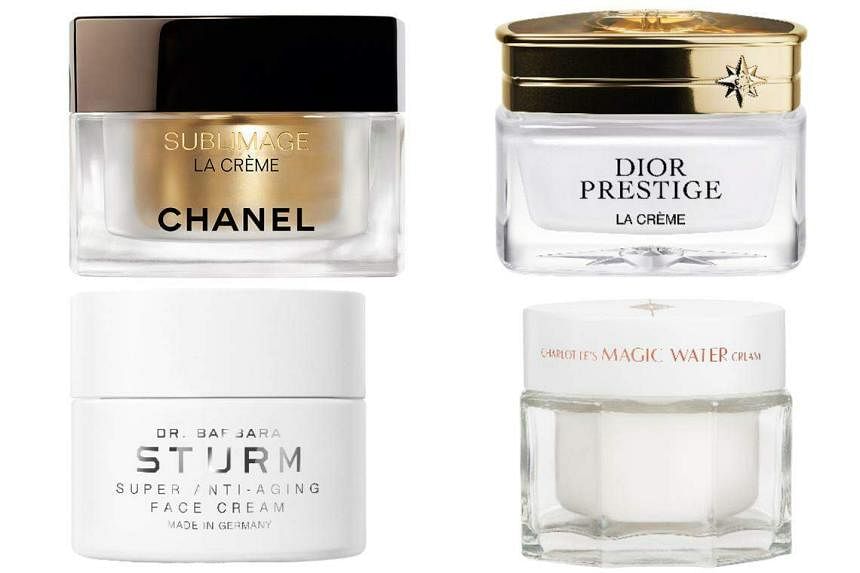This article first appeared in Harper’s Bazaar Singapore, the leading fashion glossy on the best of style, beauty, design, travel and the arts. Go to harpersbazaar.com.sg and follow @harpersbazaarsg on Instagram; harpersbazaarsingapore on Facebook. The October 2023 issue is out on newsstands now.
SINGAPORE – Skin cycling, a buzzworthy trend in skincare, has taken the social media skincare community by storm.
If you are a regular on platforms such as Instagram or TikTok, you would probably have noticed the term “skin cycling” making waves.
It is not just a passing fad, with hashtags like #skincycling racking up millions of views. But what exactly is this skincare approach and why has it gained so much popularity in recent times?
Dr Whitney Bowe, a dermatologist certified in New York City, is credited with coining the term “skin cycling”. While the term is new, the key principle of incorporating “rest days” into one’s skincare routine is not a new concept. Dermatologists have long been advising intermittent or alternating use of active skincare ingredients.
During the pandemic, many people found themselves paying more attention to their skincare routine, piling on layers of products and experimenting with various ingredients.
Many also started experiencing irritation and skin damage as a result of excessive layering or using ingredients that end up impairing the skin barrier.
Skin cycling seeks to address this problem by encouraging a more thoughtful and strategic approach to skincare. Rather than continuously adding more products to your routine, skin cycling emphasises using products in a way that complements one another. It is about finding the right balance, not overloading your skin.
The core idea is to create a skincare routine that includes “rest days” for your skin. These rest days allow your skin to repair itself after using specific products. This can help prevent irritation and inflammation, ultimately leading to healthier skin.
To start with skin cycling, you will need a few essential products: an exfoliator (such as glycolic acid or salicylic acid), a retinoid (which could be retinol or retinaldehyde) and a moisturiser (preferably a fragrance-free ointment or cream).
The core of skin cycling comes down to its timing – it is typically based on a four-day cycle. The first night is exfoliation night. This is when you cleanse your face, pat it dry and apply the exfoliator. Exfoliation removes dead skin cells from the surface, allowing other products to penetrate more effectively. Following exfoliation, it is essential to moisturise your skin.

The second night in the cycle is dedicated to retinoids. Retinoids are vitamin A derivatives known for their ability to reduce fine lines and wrinkles. They come in various forms, from prescription medications such as tretinoin to gentler over-the-counter products like retinol. However, it is important to note that retinoids can irritate your skin, especially when you have not used them before.
On retinoid night, you cleanse, pat dry and then apply retinoid. For those with sensitive skin, it is advisable to moisturise sensitive areas, like under the eyes and the corners of the nose, before applying the retinoid. If skin feels dry after retinoid application, moisturise again, applying the moisturiser on top of the retinoid.

Nights three and four in the cycle are recovery nights, that is, to give your skin a break from exfoliating acids and retinoids. Instead, focus on nourishing your skin’s microbiome and repairing your skin barrier. This involves hydration and moisture, so be sure to cleanse your skin thoroughly before applying a moisturiser. On recovery nights, you do not necessarily need to pat your skin dry – leave it slightly damp. You can even add a hydrating serum before applying your moisturiser.
While the general skin cycling routine is four days, it is not a plan that is set in stone. The length of your skin cycle can be adjusted based on your skin type and its response to the products. If you experience skin sensitivity or redness, you can increase the number of recovery nights until your skin adapts well to the exfoliator and retinoids. The reverse can also be done – cutting down on the number of recovery days once your skin has built up tolerance to retinoids and if you want to see more intense results.

So, how can skin cycling benefit your skin? Dermatologists and advocates of this approach suggest that skin cycling offers several advantages. For one thing, it can help repair your skin barrier. A healthy skin barrier is essential not only for cosmetic reasons, but also for overall skin health. Research indicates that a compromised skin barrier can contribute to various skin conditions, including acne and eczema.
Over-exfoliating and using potent retinoids can potentially harm your skin barrier, leading to redness and irritation. However, skin cycling’s recovery nights, which focus on nourishing and strengthening the skin barrier, have been a game-changer for many individuals.
Skin cycling can be helpful especially for those with sensitive skin and who would like to benefit from the use of retinol and exfoliants, but are wary of introducing products that are potentially irritating to their skin. That said, if you do have conditions such as severe acne or rosacea, it is still best to consult your dermatologist before embarking on a skin-cycling routine.
With myriad skincare products out there, it is easy to fall into the idea that applying more layers will help your skin absorb the benefits of active ingredients. Skin cycling serves as a reminder that sometimes, less is more, and a well-planned skincare routine can yield the best results for your skin’s health and appearance.

